
Is that one ripe?
Can I pick that yet?
How can you tell if it’s ready?
To all of my new gardening friends out there, let me put your worries at ease – I still ask this question about some veggies.
How can you tell when a vegetable is ready to be harvested?
It’s one of those skills we take for granted when we start growing vegetables in a garden. Or maybe, you’ve been gardening for so long that you don’t even think about it, that is until you try growing something new, like those fancy cucamelons you keep seeing in the seed catalogs.
After all, we buy produce in the supermarket all the time. We know how to tell if that’s good. Well, most of the time anyway.
But when that same vegetable grows in your backyard, and it’s still connected to the plant? That’s a whole other story.
Days to Harvest
Many seed packets will have a ‘days to harvest’ range on the packet. A great way to gauge when a vegetable is ready for harvest is to record when you planted them in a gardening planner along with their expected days to harvest. Having this information to turn to later in the season can be invaluable.
For all the gardeners out there, new and old alike, who have stood in their garden scratching their heads wondering if the asparagus is ready or if that eggplant should be left to grow for a few more days, here you go. I’ve put together this handy-dandy harvesting guide.
1. Asparagus
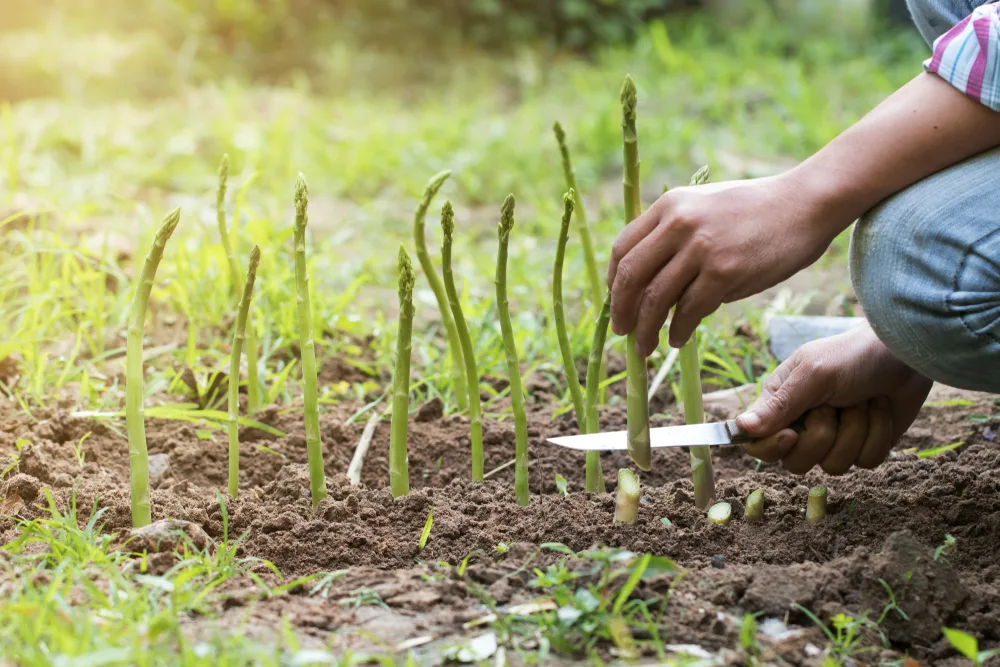
Nothing says spring is here like asparagus, except for wondering, “When can I pick my asparagus?”
Harvest asparagus when the stalks are between 6” to 10” in length; the slenderer they are, the more tender they will be. You want to harvest before they flower.
2. Beans
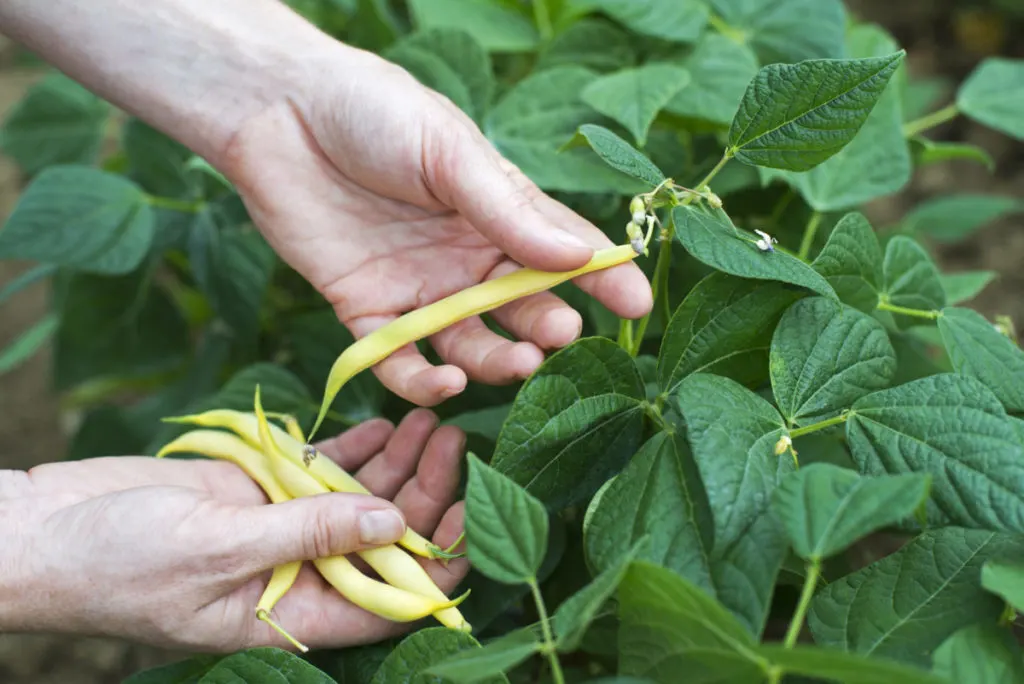
Green beans are a wonderfully easy to grow vegetable, and harvesting them is even easier. Pick green beans when they’re still young and tender. If the pods are left on the vine for too long, they become tough. Pick the pods when they are the size of a pencil and between 4” – 6” long.
3. Beets
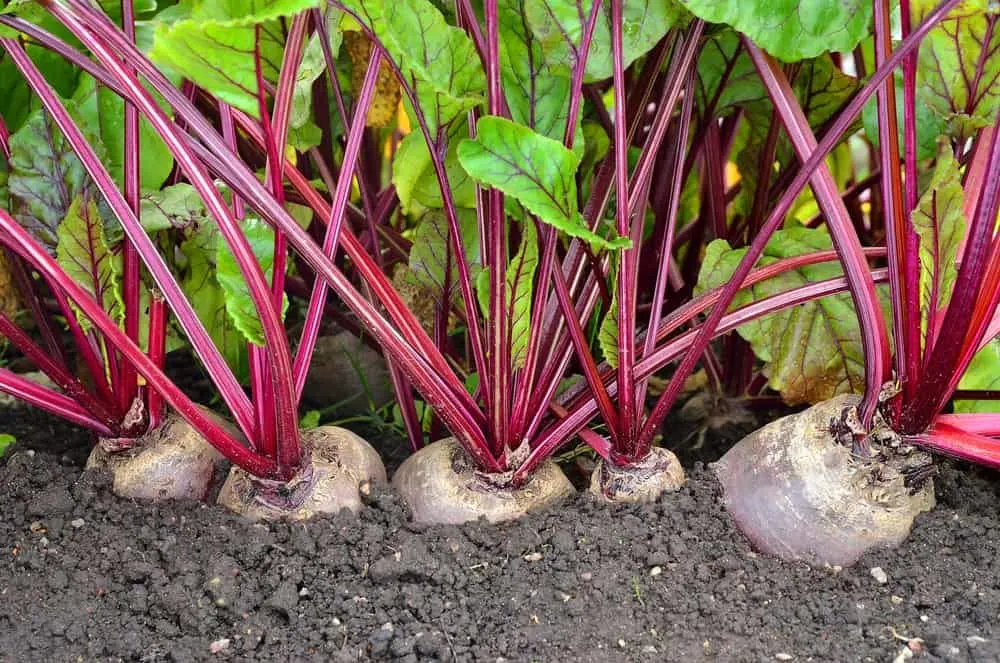
Beets grow fairly quickly and will reach maturity a mere month to six weeks after planting. You can harvest the tops for eating at any time, but if you want the beetroot, you’ll want to pick them once they reach 2” – 3” in diameter above the soil.
4. Bok Choy
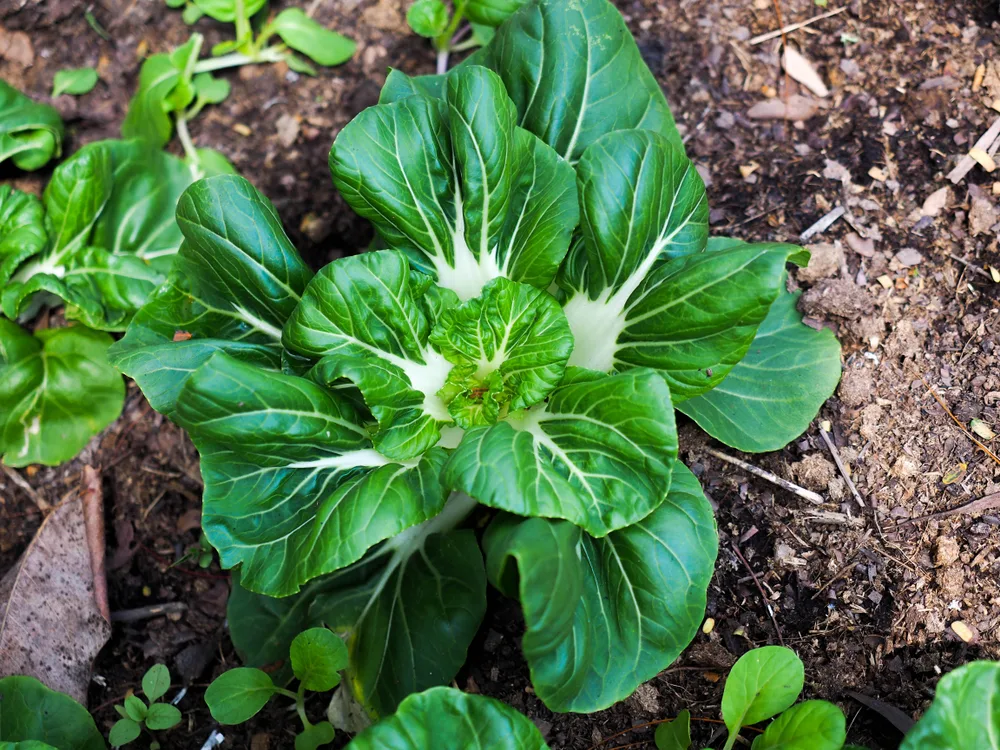
Depending on the variety you’ve chosen to grow, bok choy will be ready to harvest within a month and a half to two months. The stalks will be wide and well developed, and the leaves will be full and create an overall round appearance. Try to pick the heads before they begin to flower.
5. Broccoli
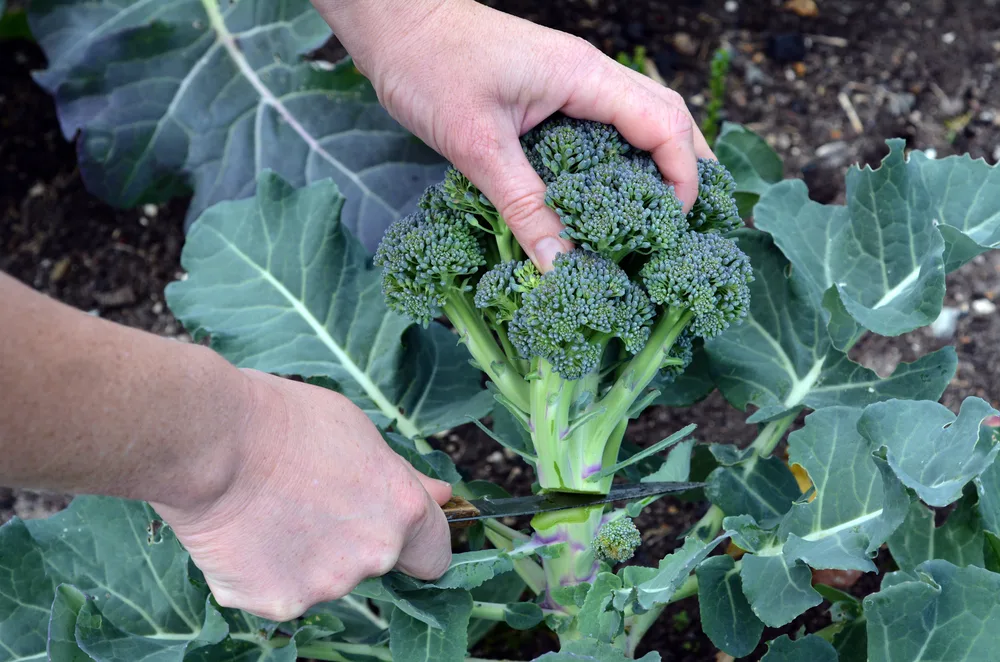
Broccoli is ready to be harvested when the heads are approximately 4” across and the florets are tightly clustered. If the broccoli begins to develop flowers, it’s past its prime.
6. Brussels Sprouts
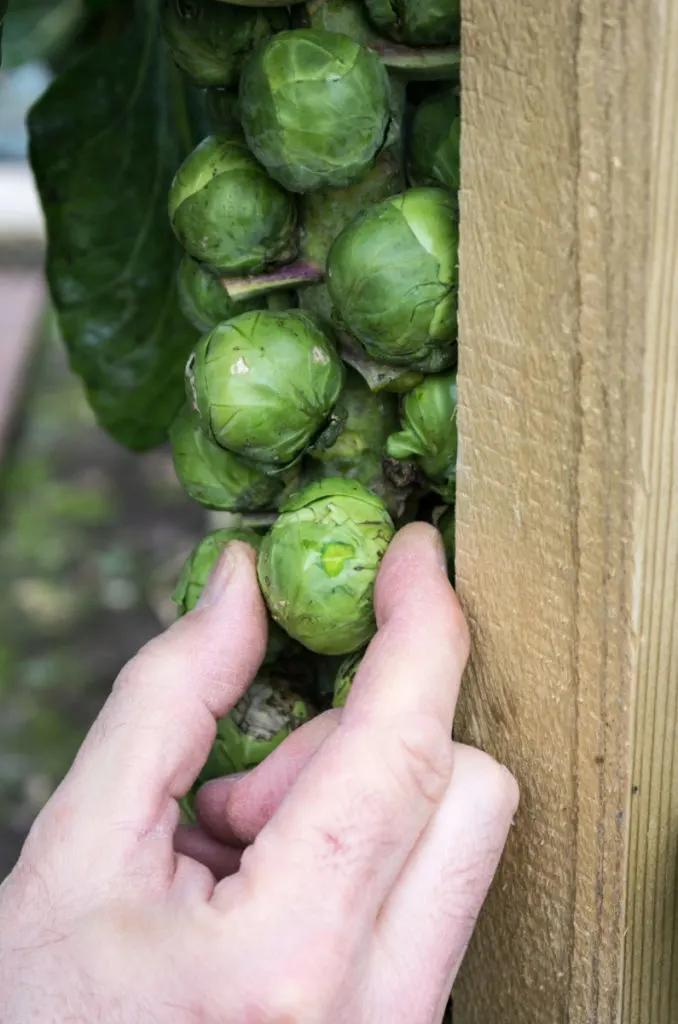
For the best flavor, harvest Brussels sprouts after the first frost in the winter. Like many cold-weather brassicas, a cold snap will turn the starches inside the sprouts into sugar. The heads will be around 1” – 2” in diameter. Simply twist them off of the stalk.
7. Cabbage
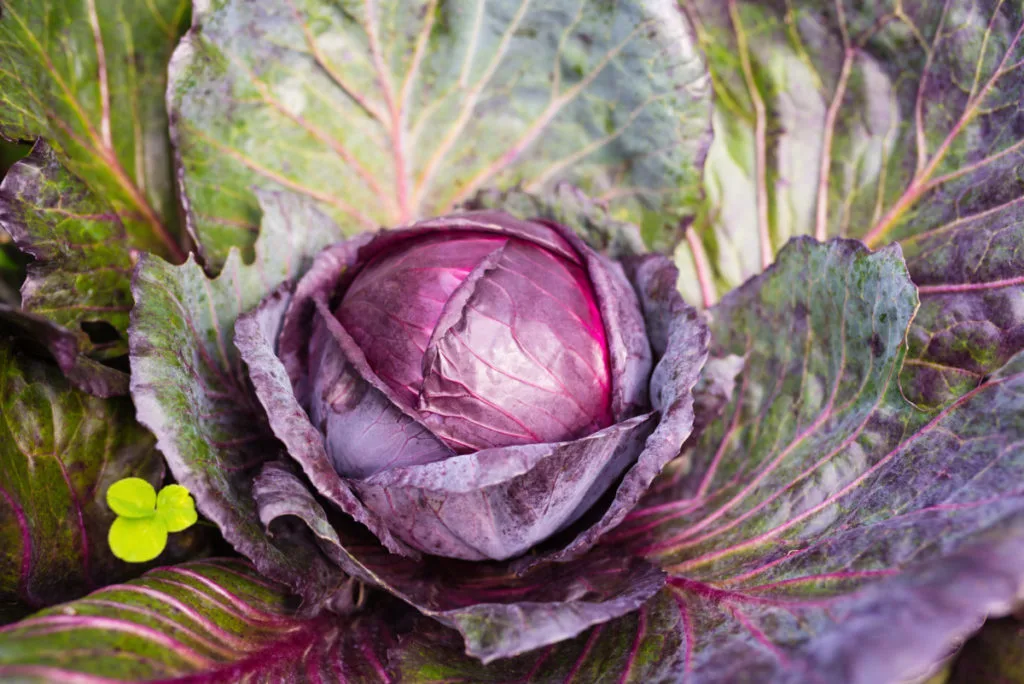
You can tell when cabbage is ready to be harvested by giving it a little squeeze. A cabbage that is ready to be picked will feel solid all the way through. A cabbage that gives or squeezes a bit still needs a bit more time.
8. Carrots
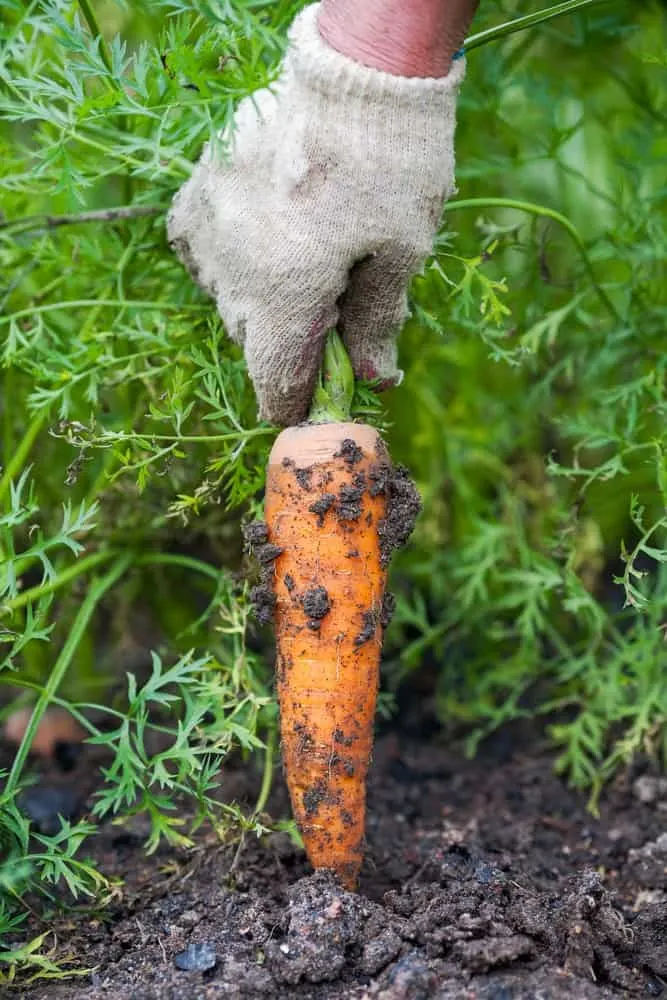
Carrots will mature in around 60-90 days, variety depending. However, the easiest way to tell when carrots are ready is by checking the tops. As a root vegetable, part of the root will show through the top of the soil. This exposed portion should be approximately 1” in diameter across.
9. Cauliflower
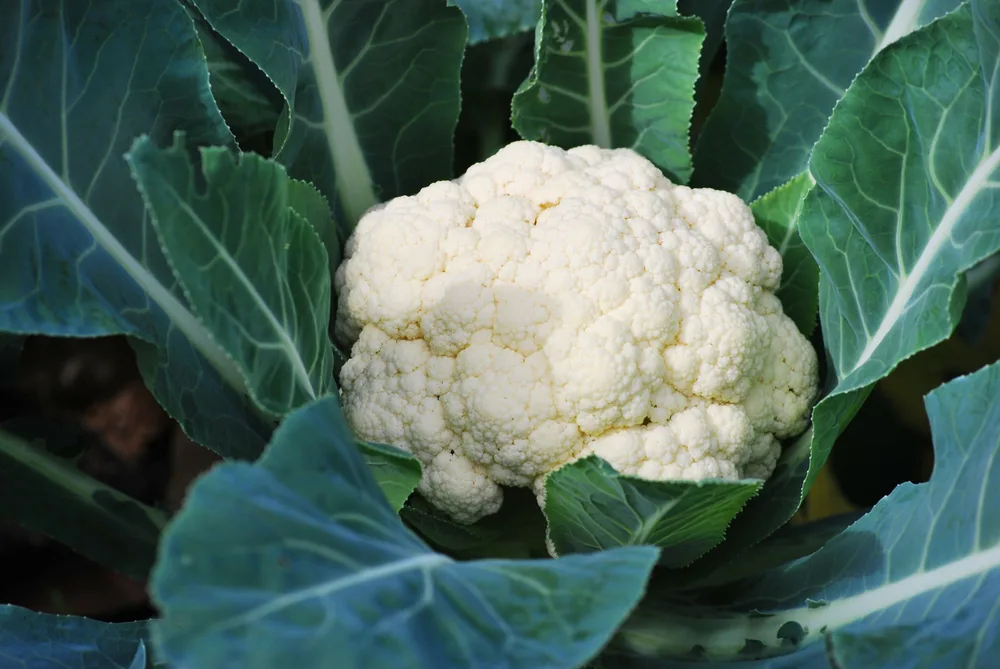
Cauliflower can be tricky. It’s ready to harvest when the head is around 6” to 8” in diameter. The florets will be tightly clustered together. A cauliflower that is past its prime will be rough, and the florets will start to separate. It may also show signs of rot.
10. Corn
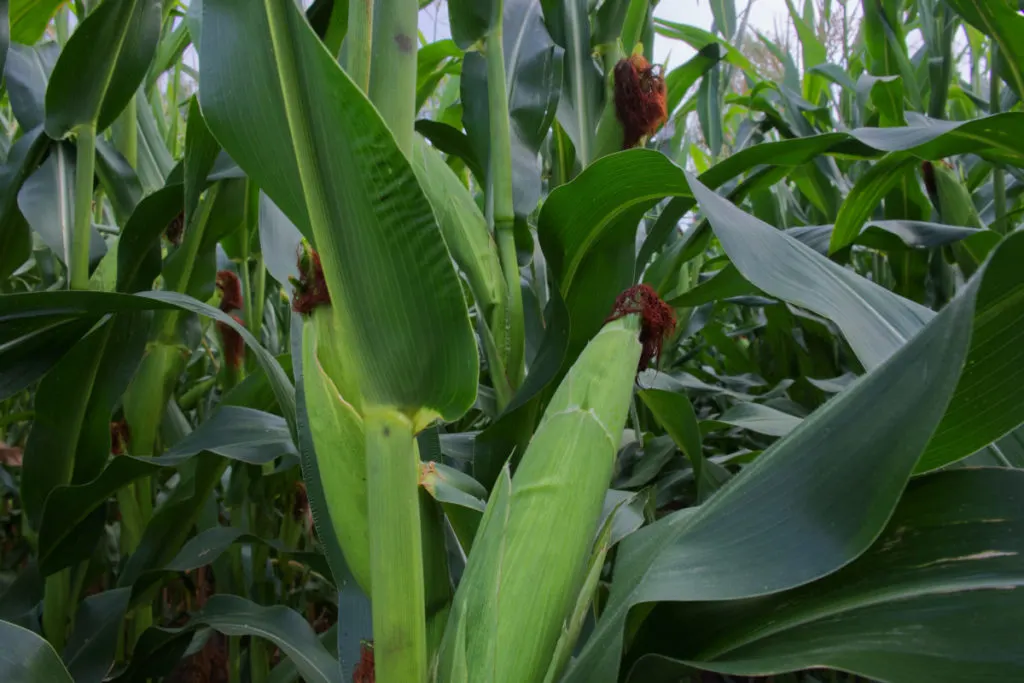
Corn is pretty easy to tell when it’s time to harvest. After it’s tasseled out, just check the silk. When corn is ready, the silk will go from a glossy white to crunchy and brown. Brown silk means your corn is ready.
11. Cucamelons
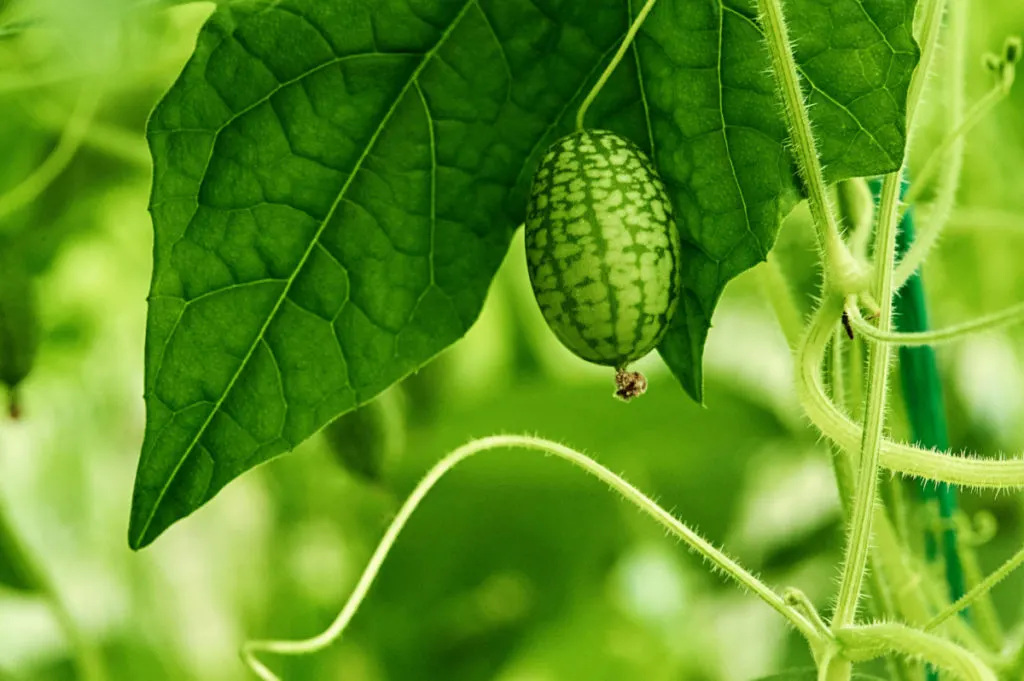
Cucamelons come on quickly once they begin to flower. These tiny little mouse melons are ready to be picked when the fruit is roughly an inch in size. Give them a little squeeze, and they should be firm, too.
12. Cucumber
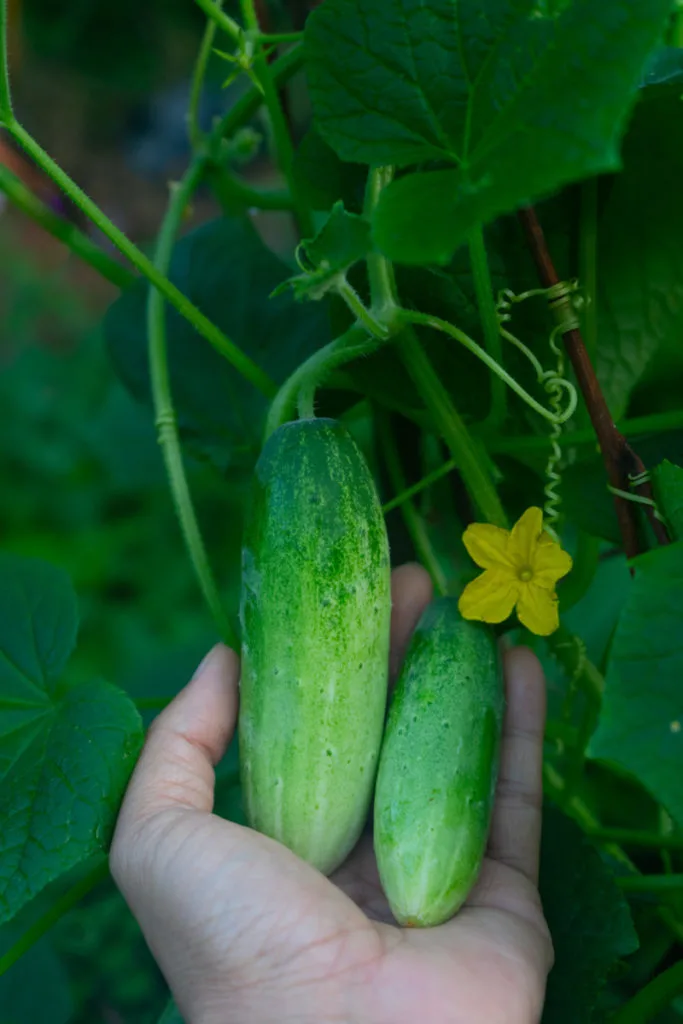
Cucumbers can become bitter and seedy if left on the vine too long. Hmmm, kind of like some people I know. Harvest your cucumbers when they’re between 6” to 8” long for the best flavor and to avoid large, tough seeds.
13. Eggplant
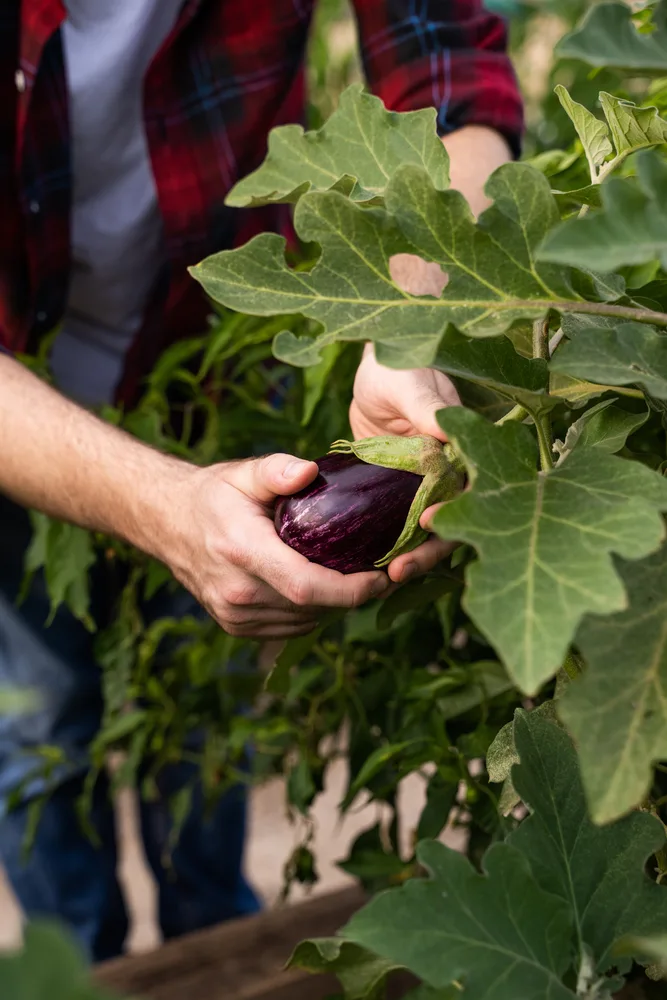
Eggplant can be tricky to know when it’s ready to be picked. There are two tell-tale signs it’s ready to be harvested, though. The first is by the gloss. Ripe eggplants have a glossiness to them when they’re ripe.
The second way to test an eggplant is by way of the fingerprint test. Press your finger gently into the flesh of the eggplant. If it bounces immediately back, the eggplant is still unripe. If a slight indentation is left for a moment before fading, the eggplant is ready to be picked.
14. Garlic
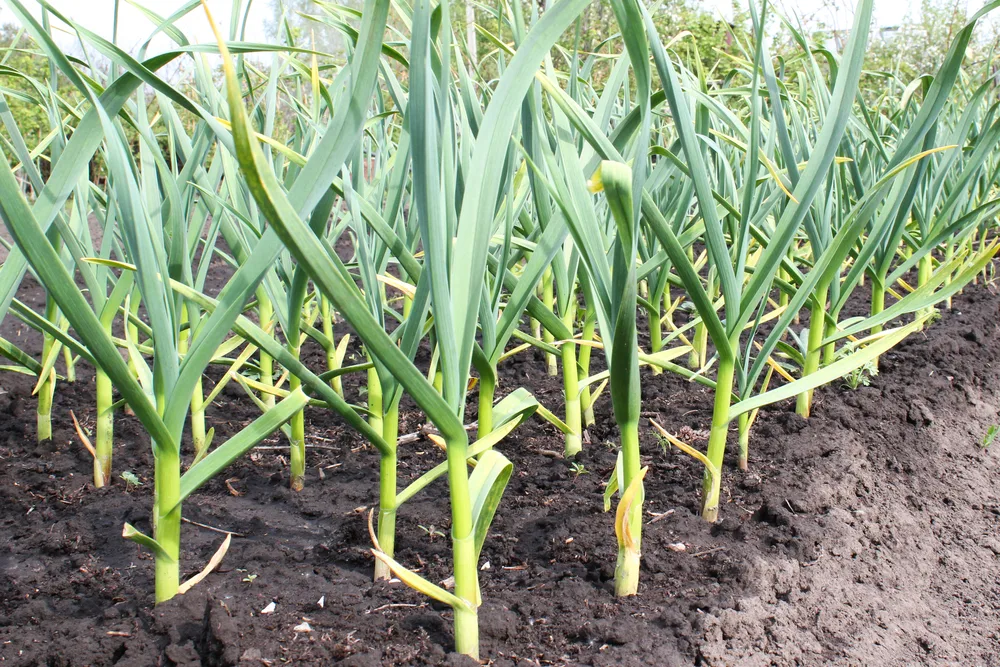
Garlic can be harvested when roughly half of the above-ground leaves have died off. And if you grow hardneck garlic, you’ll be clued in by the development of scapes. Once you prune your garlic scapes, the garlic will be ready to harvest in about a month.
15. Ground Cherries
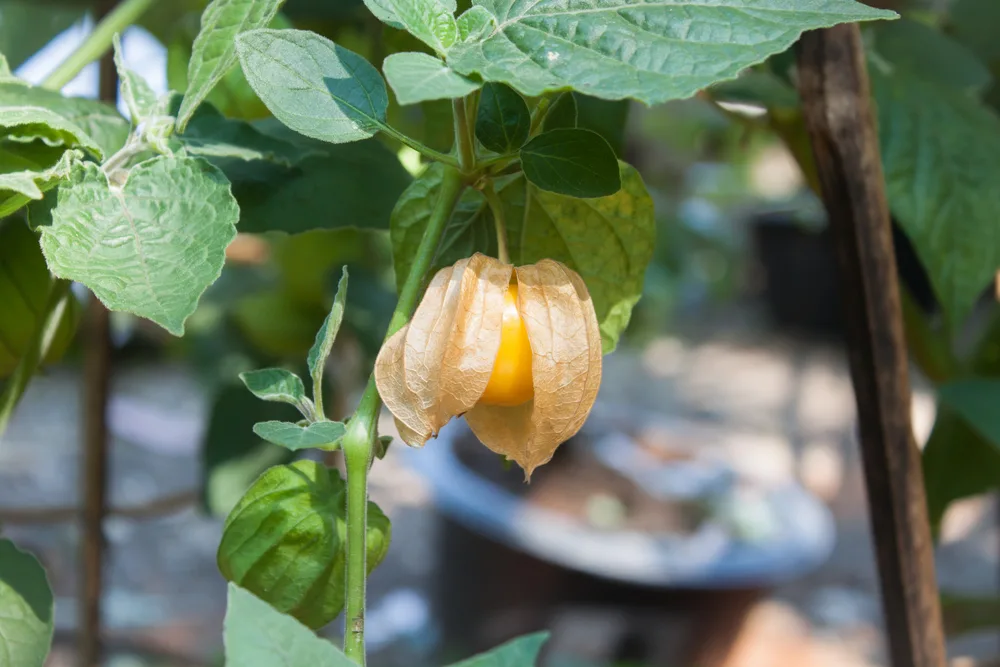
Ground cherries are ripe when their outer papery husk turns a straw-colored yellow. Some will ripen on the vine, while others will fall from the plant when they’re ready to harvest, hence their name. The actual berry inside the husk is a golden yellow when they are ripe.
16. Kale
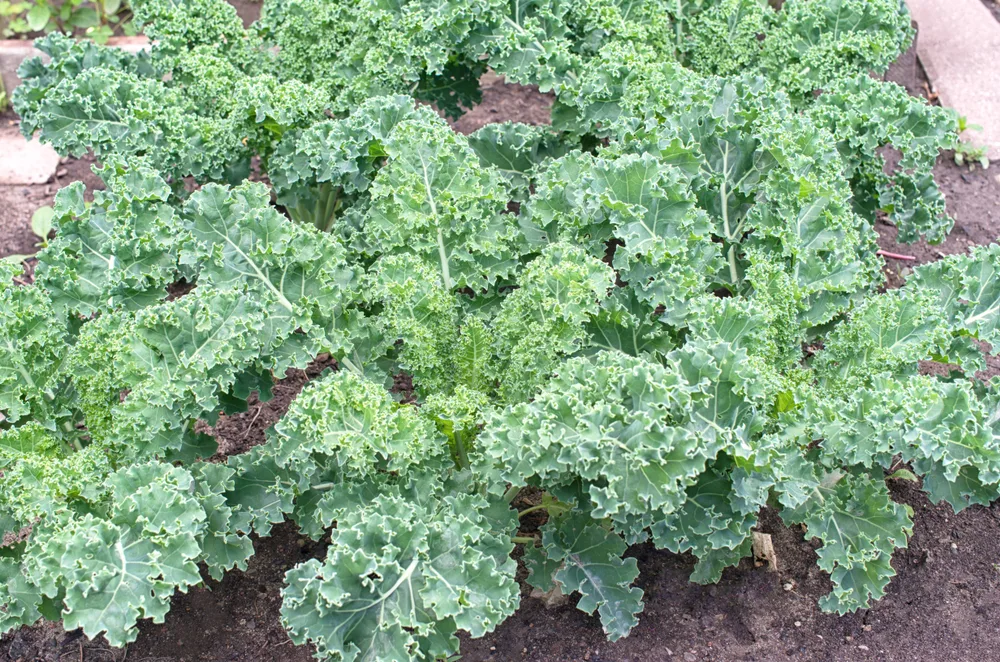
You can pick kale leaves as soon as they become the size of your hand. You’ll want to pick the oldest and largest outer leaves first. Make sure you compost any yellowed or scraggly-looking ones. As you harvest, more leaves will grow from the inside out of your kale plant.
17. Leeks
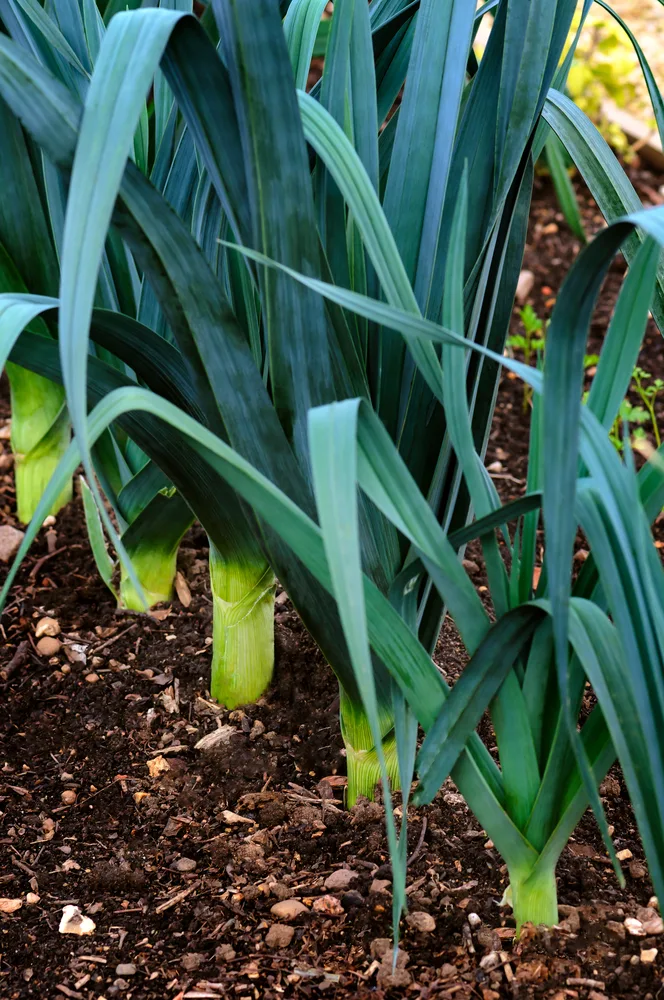
Leeks are another long-haul veggie. Most varieties take more than 100 days to mature. Leeks are ready when they reach 1” to 2” in diameter.
18. Lettuce
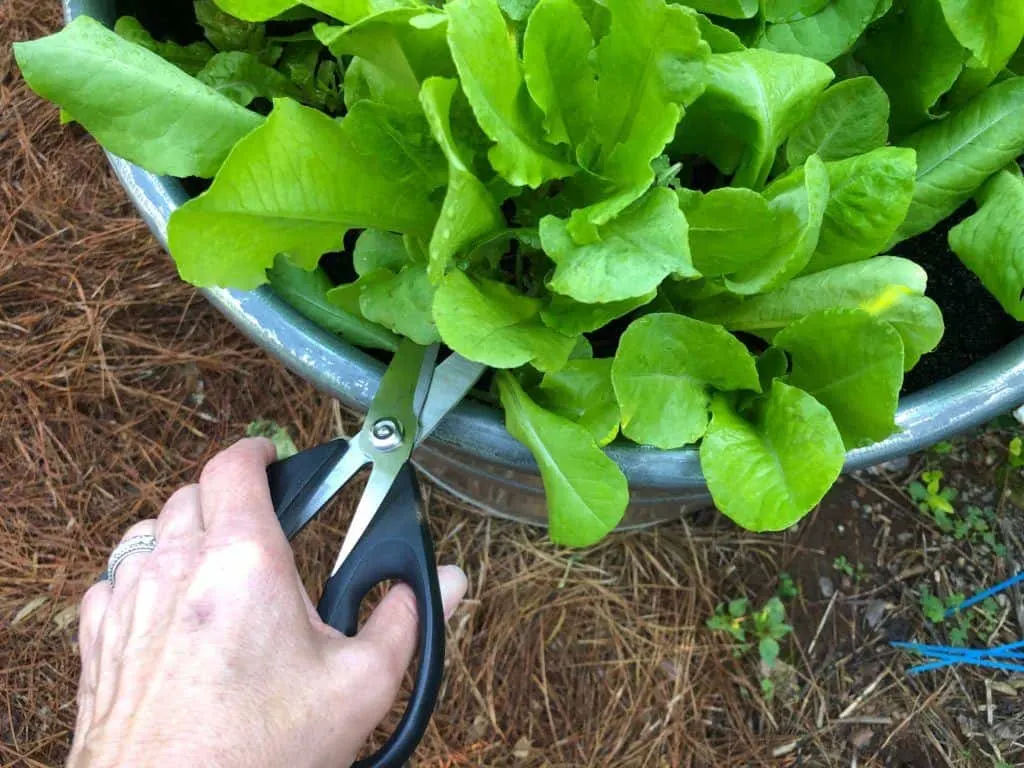
Most cut and come again lettuce can be harvested when the leaves are around 4” long. As the name implies, when you cut the lettuce, it will grow more leaves again.
For head lettuces such as romaine or green ice, wait until a recognizable lettuce head is formed before picking.
You should stop picking lettuce once the leaves become bitter and it starts growing into a long stem.
19. Onions
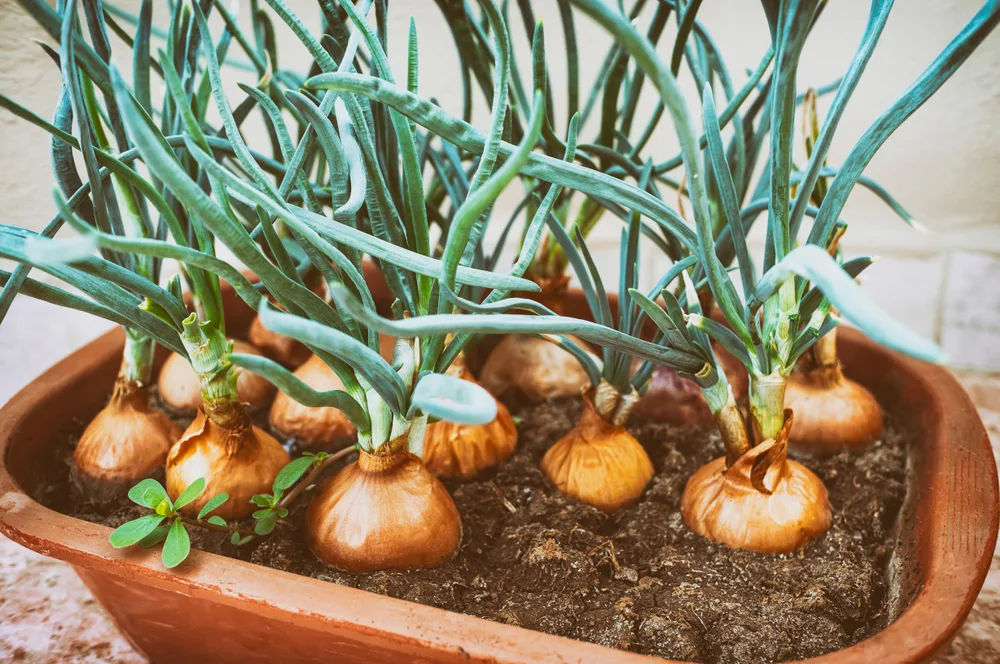
Onions are a vegetable whose harvest date is all about personal preference. Basically, you just dig them up when they reach the size you want. Another indicator that onions are ready is when the green tops of their leaves begin to turn yellow and fall over.
20. Peas
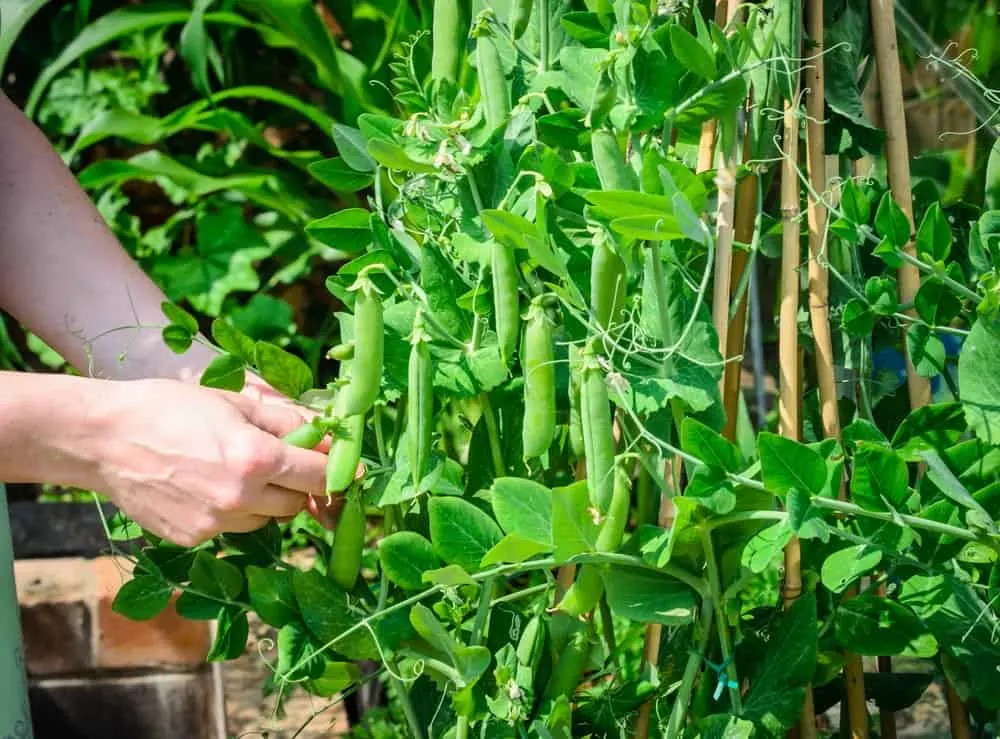
Keep an eye on the flowers to know when peas are ready. Most peas will be ready roughly three weeks after you start to see flowers.
For snow peas, harvest the pods while they’re still relatively flat, but once they reach 2”-4” inches long. For sugar snap peas, you’ll also want to harvest them when the pods reach around 2”-4” long and while the peas inside are still relatively small. For shelling peas, harvest those when they are plump and firm, and you can feel the large peas inside.
21. Peppers, Hot
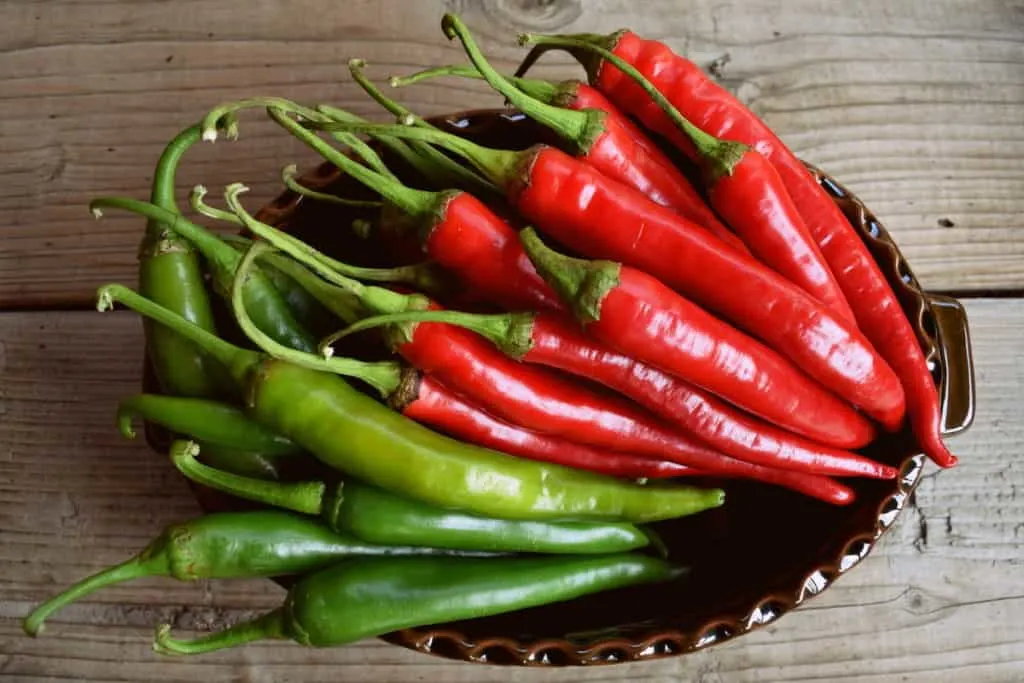
Many hot peppers turn red when they reach maturation. However, a few varieties, such as jalapeno and poblano, stay green. For jalapeno peppers, they will be ready to harvest when they reach 3” long. For poblanos, they will become deep, glossy green and will be around 4”-6” long when they’re ready to be picked.
22. Peppers, Sweet
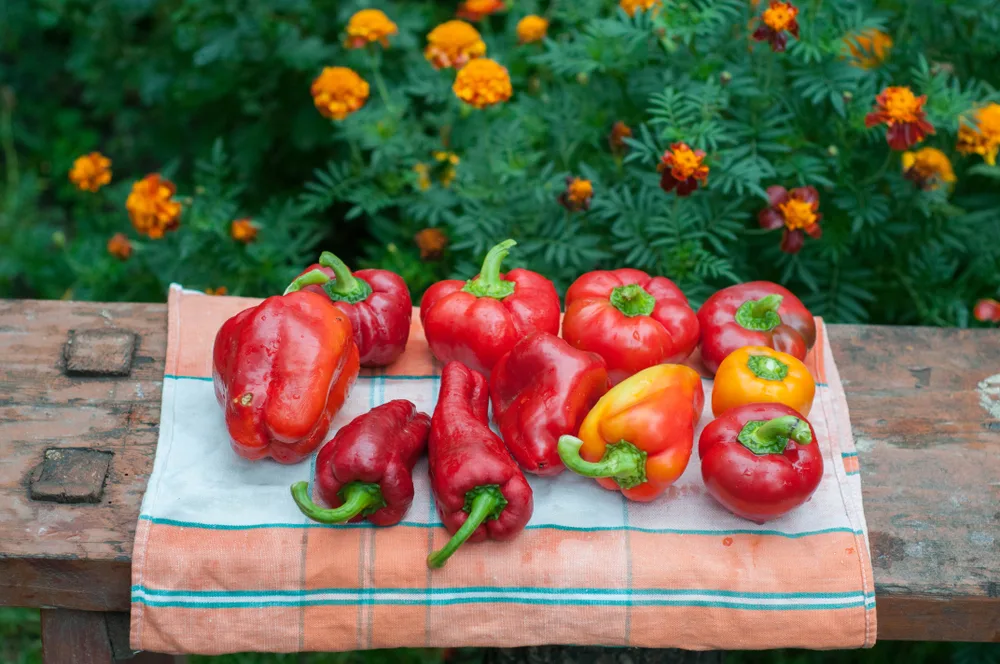
Sweet peppers are pretty easy to judge when they’re ready to pick, too, as most of them change from green to a specific color when they are ripe. Green bell peppers can be a bit trickier; they should be firm and large, 3-5 inches in diameter.
23. Potatoes
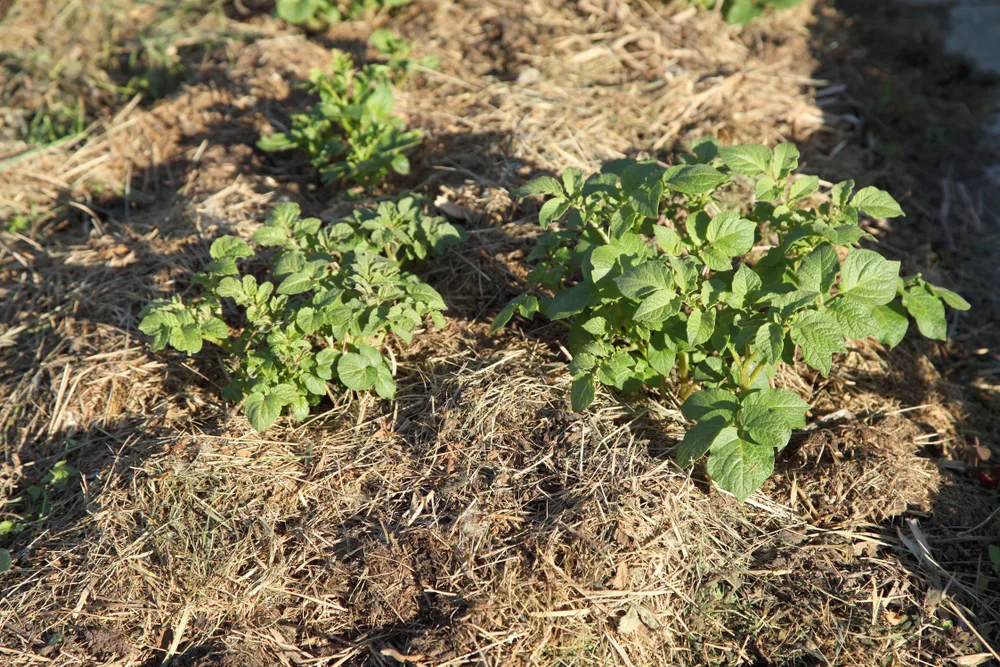
Potatoes can be a tough vegetable to know when it’s time to pick as they grow entirely underground. Lucky for us, nature gave us some pretty good clues as to when it’s time to unearth your tubers.
If you want small, “new” potatoes, wait until you see flowers on your plants; this happens around the 60-90 day mark, depending on the variety you’re growing.
A bit of patience is needed for larger spuds with thicker skins that will last through the winter. The flowers and vines growing above ground will begin to wither and die off. When the tops of the potato plants have completely died off, your potatoes are ready to dig.
Don’t forget – don’t brush off too much dirt from your potatoes, and let them cure for several days someplace cool. Here’s our guide to curing and storing potatoes for the long haul.
24. Radishes
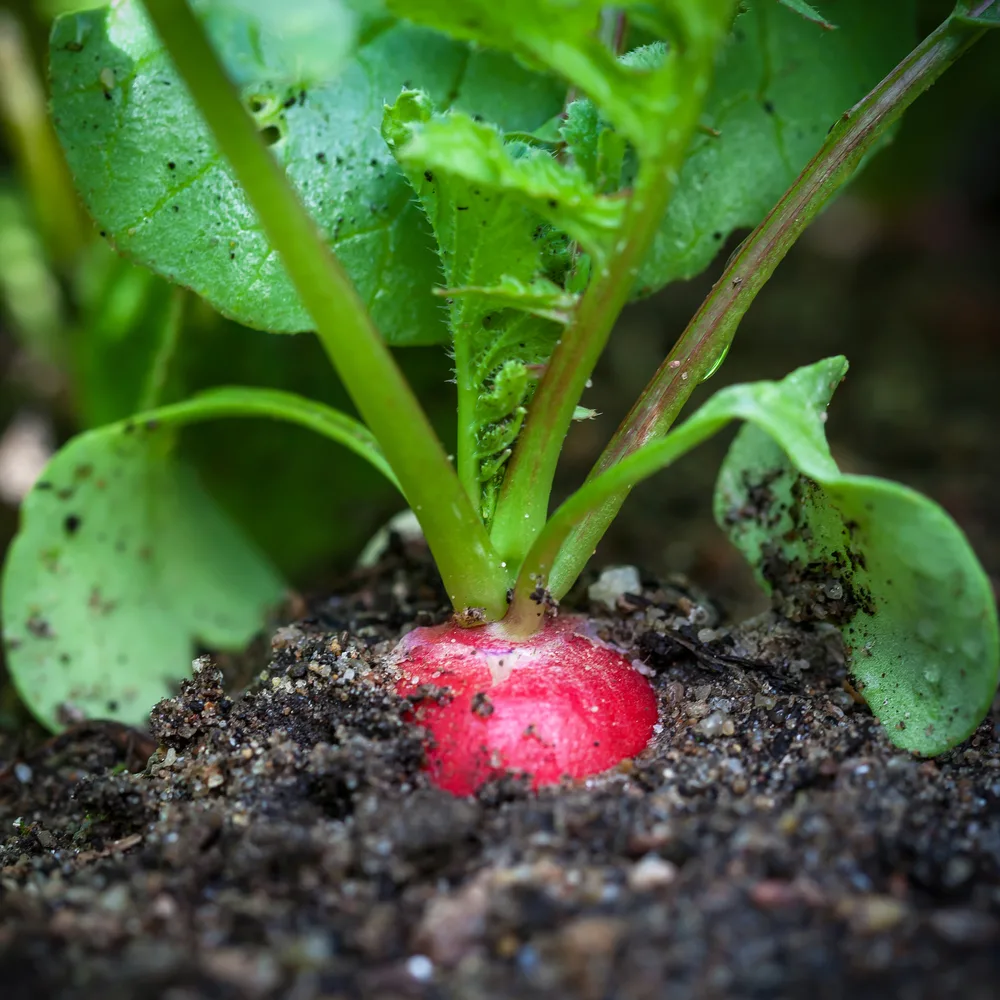
Radishes are the instant gratification of the vegetable world. Most varieties mature in as little as 25 days. Some types, such as watermelon radishes, can take up to 100 days, but for the most part, you can pick radishes pretty quickly after planting them.
A good rule of thumb is to pick radishes when the tops of the roots are about 1” in diameter above the soil surface.
25. Spinach
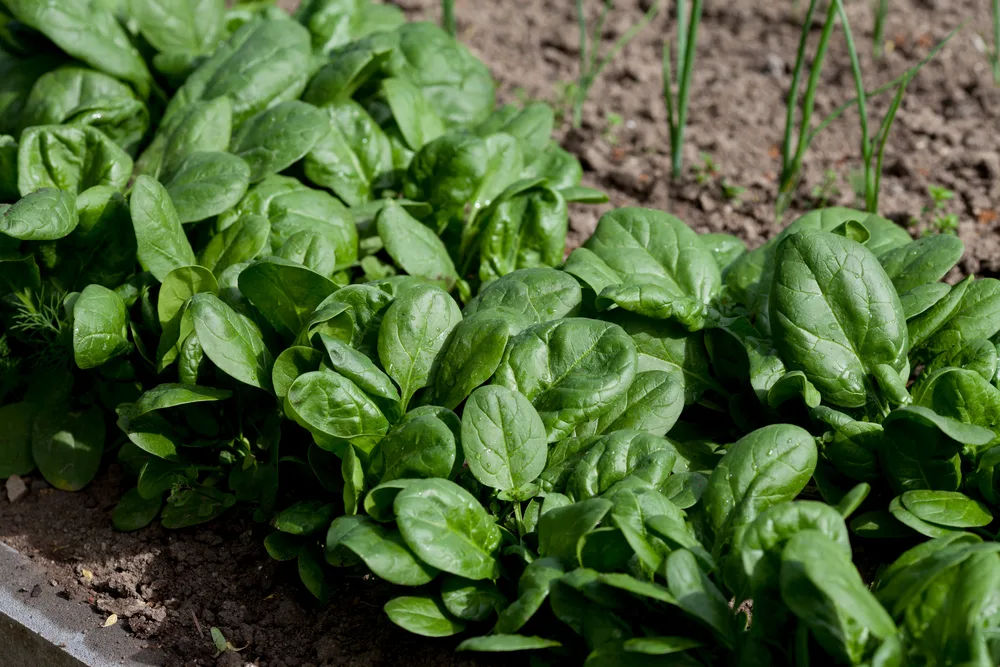
Spinach is a cool-weather crop and takes between 30 to 50 days to mature, depending on the variety. Pick spinach leaves when they’re about 6” long. If you prefer “baby spinach,” pick the leaves when they’re around 3” long.
As the weather gets hotter, your spinach will start to get leggy. Go ahead and pull it up at this stage for the final harvest of leaves. And don’t forget to plant more in the fall!
26. Squash, Summer
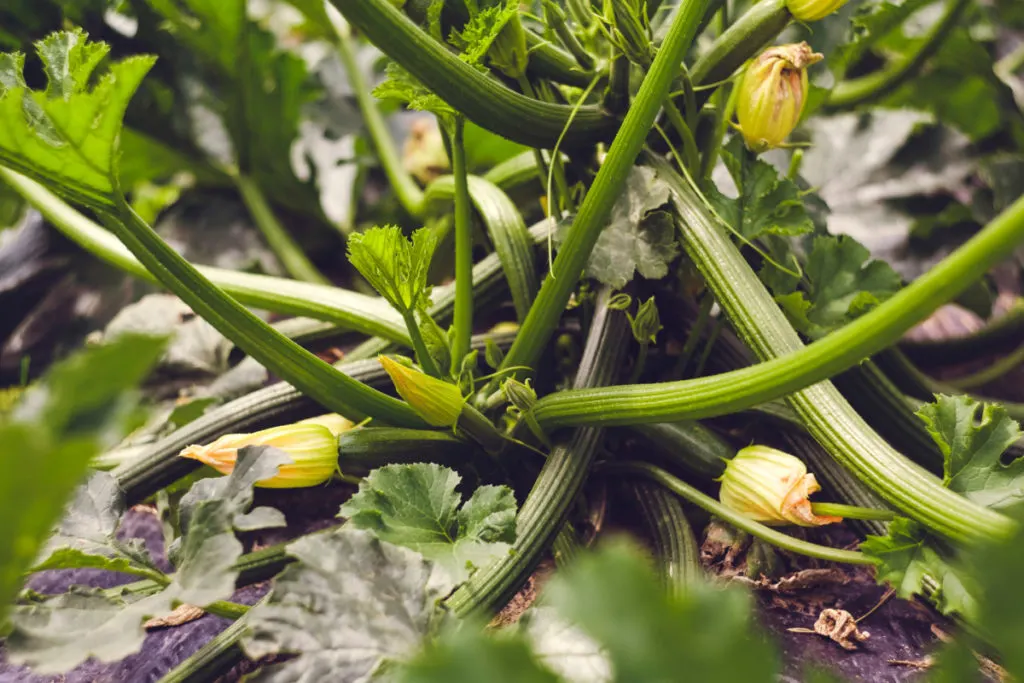
Summer squash like zucchini and yellow straight neck come down to personal preference. You can pick them when they’re only a few inches long for an extremely tender and bite-sized squash.
Or you can let them grow larger, from 6” to 10” long. However, the larger summer squash grows, the tougher the outer skin becomes and the more seeds they develop inside. The seeds can often be tough to eat and may need to be removed before you cook the squash.
27. Squash, Winter
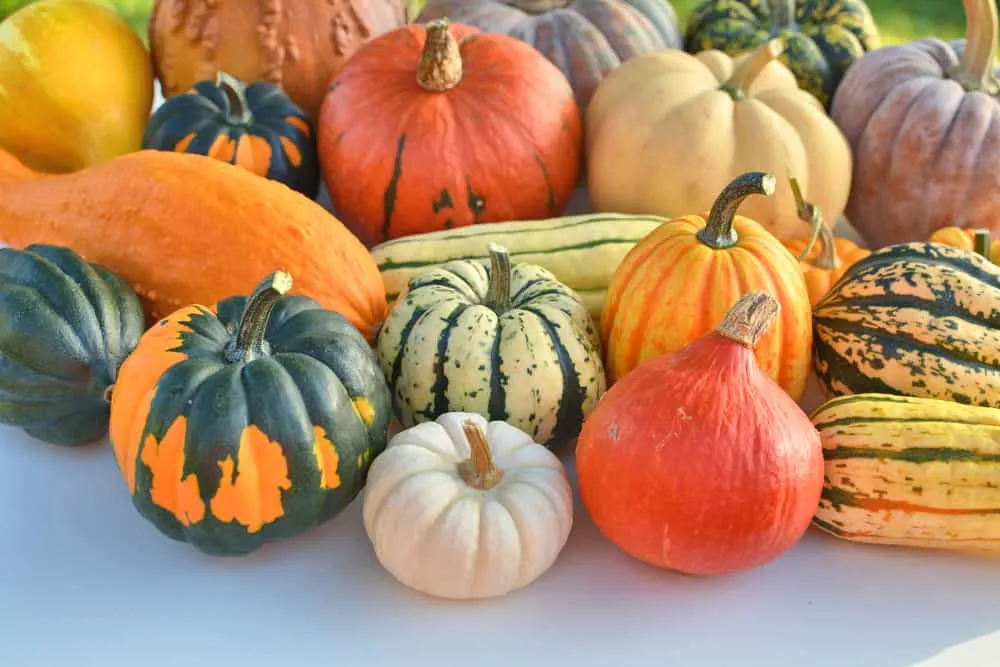
For winter squash, you’ll need to pay attention to the color and the rind. The squash should be a solid color once it’s finished growing, for instance, pumpkins turning green to orange. And the rind of the squash should be thick and hard. A good rap on the side of your squash will yield a slightly hollow sound.
Pick your squash by cutting them from the vine, being sure to leave a couple of inches of the stem attached.
28. Swiss Chard
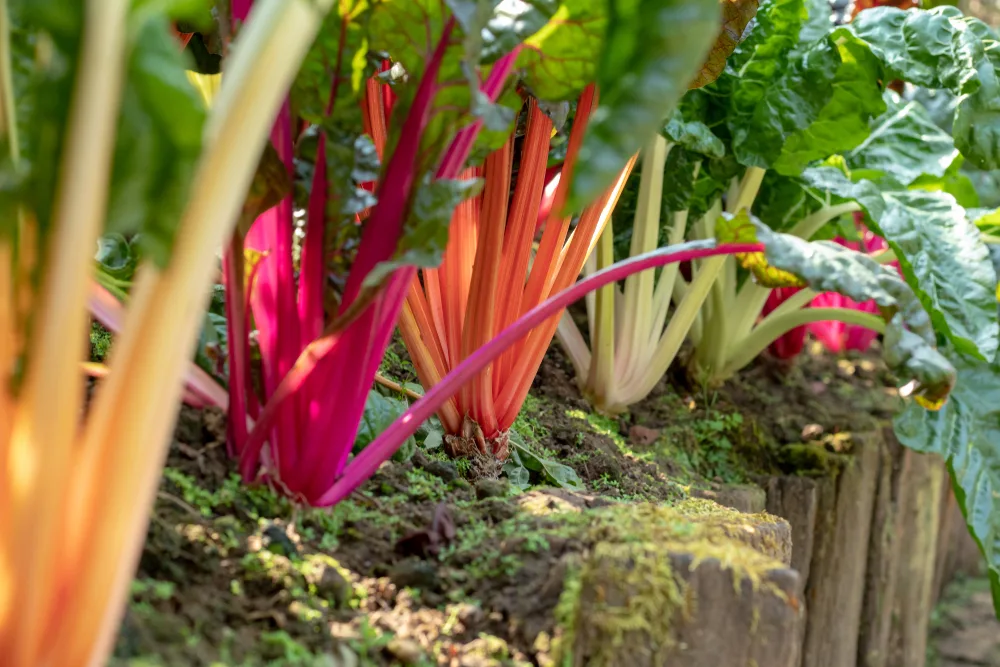
Swiss chard is all about personal preference. If you want smaller tender stalks, you can harvest Swiss chard around 30 days after planting. The stalks will be no bigger than your pinky finger, and the leaves will be roughly the size of your hand.
If you want larger Swiss chard, wait another month and harvest when the stalks are as big as celery stalks.
29. Tomatoes
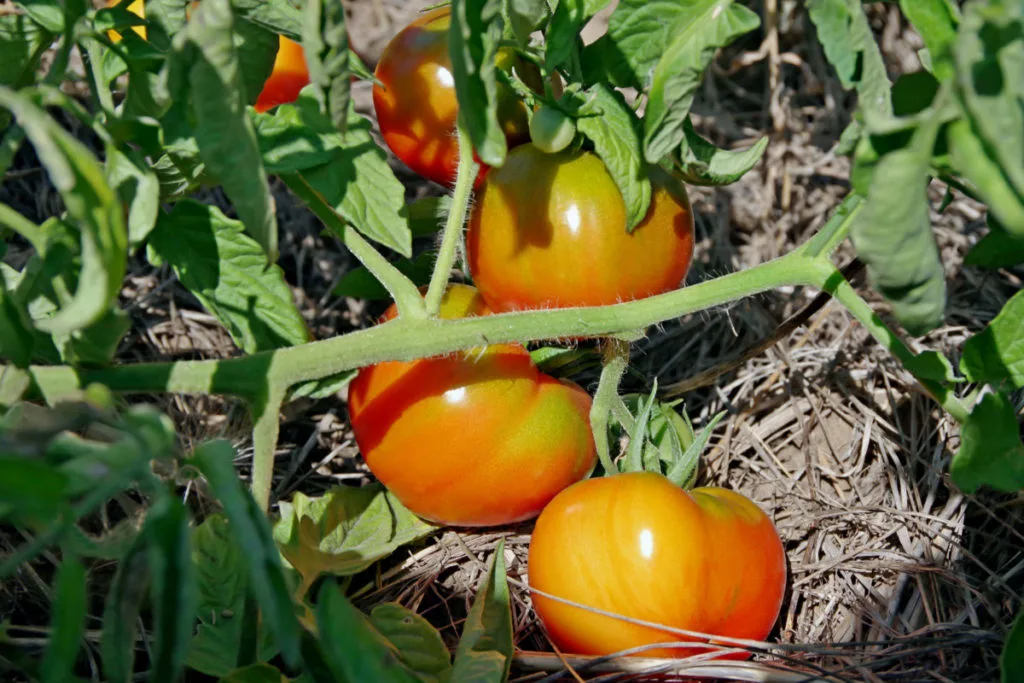
Tomatoes are pretty cool in that you can pick them from the vine, and they will continue ripening. The appropriate time to pick them is known as “the breaker stage.” At this point, the tomato has everything it needs to continue to ripen, and it will create a small barrier of cells in the stem, essentially walling it off from the rest of the plant.
The breaker stage is identified by the plant being half and half in color. Half green and half the color it will be when it’s finished ripening. So, for traditional tomato varieties, half green and half red, an almost pinkish color.
Pick tomatoes at the breaker stage and place them somewhere warm to finish ripening.
30. Turnips
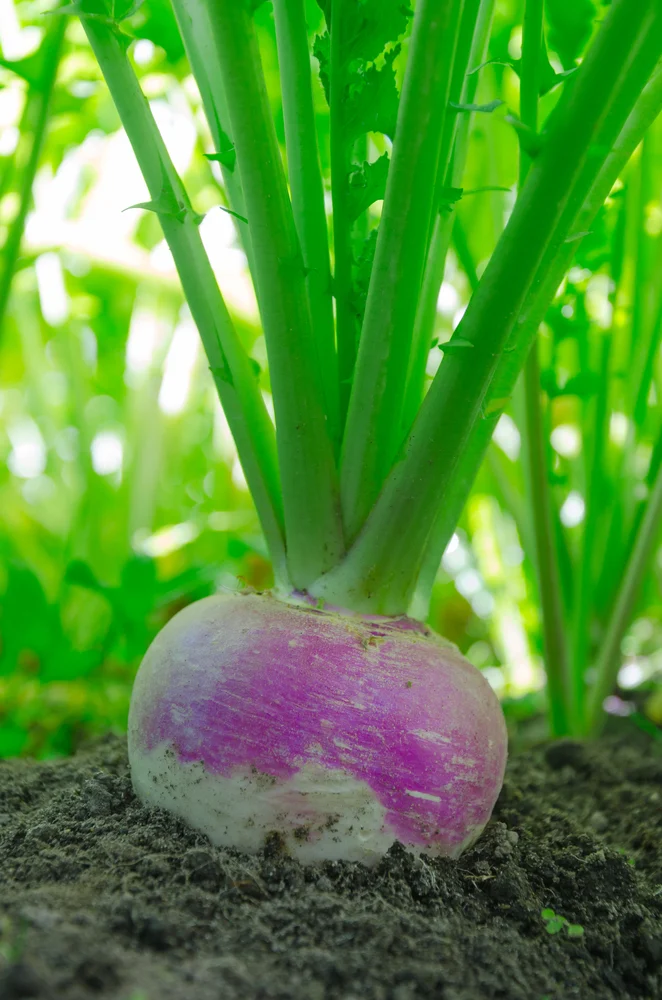
Turnips vary wildly in how long it takes them to reach their maturation date. A general rule of thumb can be applied, though; smaller turnips which are used in salads and for eating raw should be harvested when they are around 2” in diameter at the soil surface, and larger turnips used for roasting or stews should be harvested when they are 3” in diameter at the soil surface.
Turnips need to be harvested before a hard frost, though, as they will not survive the cold.
Ta-dah! Now you know when to harvest all of your carefully tended vegetables. Bookmark this article, so it’s easy to refer to throughout the growing season.

Get the famous Rural Sprout newsletter delivered to your inbox.
Including Sunday musings from our editor, Tracey, as well as “What’s Up Wednesday” our roundup of what’s in season and new article updates and alerts.

